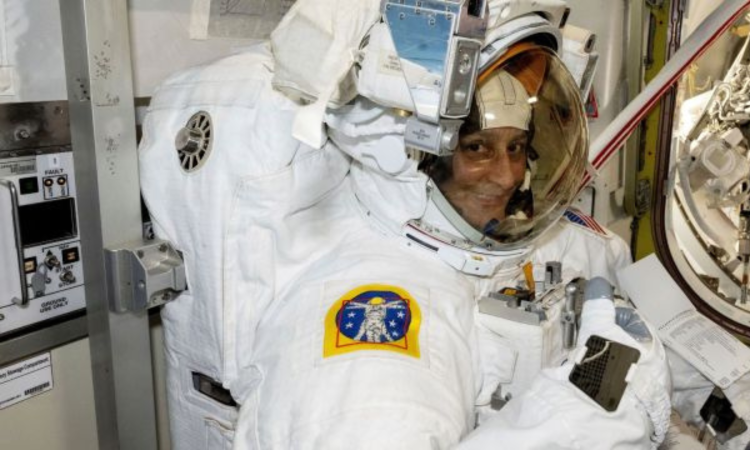Mission Mars: How space exploration pushes human body to its limits
Mars will test our biology more than our technology.

NASA (AP)
On January 14, 2004, the US announced a new “Vision for Space Exploration,” promising that humans would not only visit space but live there. Two decades later, NASA’s Artemis programme is preparing to return astronauts to the Moon and eventually send humans to Mars.
That mission will last around three years and cover hundreds of millions of kilometres. The crew will face radiation, isolation, weightlessness and confinement — stresses unlike any encountered before. For physiologists, this is the ultimate frontier: a living laboratory where the human body is pushed to its limits.
Space is brutally unforgiving — a vacuum flooded with radiation and violent temperature extremes. The absence of gravity dismantles the systems that evolved to keep us alive on Earth. Human physiology is tuned to one atmosphere of pressure, one gravity and one fragile ecological niche; step outside that zone and the body begins to fail.
Yet adversity drives discovery. High-altitude research showed how blood preserves oxygen at the edge of survival, and deep-sea and polar expeditions revealed how humans endure pressure and cold. Spaceflight continues that tradition, redefining our understanding of life’s limits.
To explore those limits, physiologists are mapping the “space exposome” — every environmental stressor, from radiation and weightlessness to disrupted sleep and isolation. Each factor is harmful on its own, but combined amplify one another, revealing how the body truly works. From this emerges the “space integrome”: the complete network of physiological connections that keeps an astronaut alive.
When bones lose minerals, kidneys respond. Fluid shifts toward the head alter brain pressure and vision. Immune cells react to stress hormones from the brain. Every system influences the others in a continuous feedback loop.
The spacesuit embodies this integration — a wearable biosphere that protects against vacuum, radiation and extreme temperature. Inside layers of mylar, kevlar and dacron, astronauts live in delicate balance: enough pressure to keep fluids from boiling, yet flexibility to move and work. Each design choice mirrors a physiological trade-off.
Radiation remains spaceflight’s most insidious hazard. Galactic cosmic rays slice through cells and fracture DNA in ways Earth biology was never built to repair. Research into radiation biomarkers is improving astronaut safety and transforming cancer treatment.
Microgravity presents another paradox. In orbit, astronauts lose up to 1.5% of bone mass per month, and muscles weaken despite exercise. Yet this environment offers a model for accelerated ageing, helping uncover molecular pathways that could slow degenerative disease. Astronauts counteract bone and muscle loss through daily resistance workouts, lower-body pressure chambers and tightly controlled diets.
Tiny sensors in spacesuits and under the skin now track heart rate, brain activity and blood chemistry in real time. Multi-omic profiling integrates genes, proteins and metabolism to build a complete picture of how the body responds to spaceflight.
This data feeds into digital twins — virtual astronauts that simulate biological responses to stressors such as radiation or microgravity. The astronaut of the future will not just endure space but collaborate with their own biology, using real-time data to anticipate and adapt to risk.
By studying how humans survive without gravity, we learn how to live better with it. Ultimately, Mars will test our biology more than our technology. Space may dismantle the body, but it also reveals its astonishing capacity to rebuild.
The Conversation



